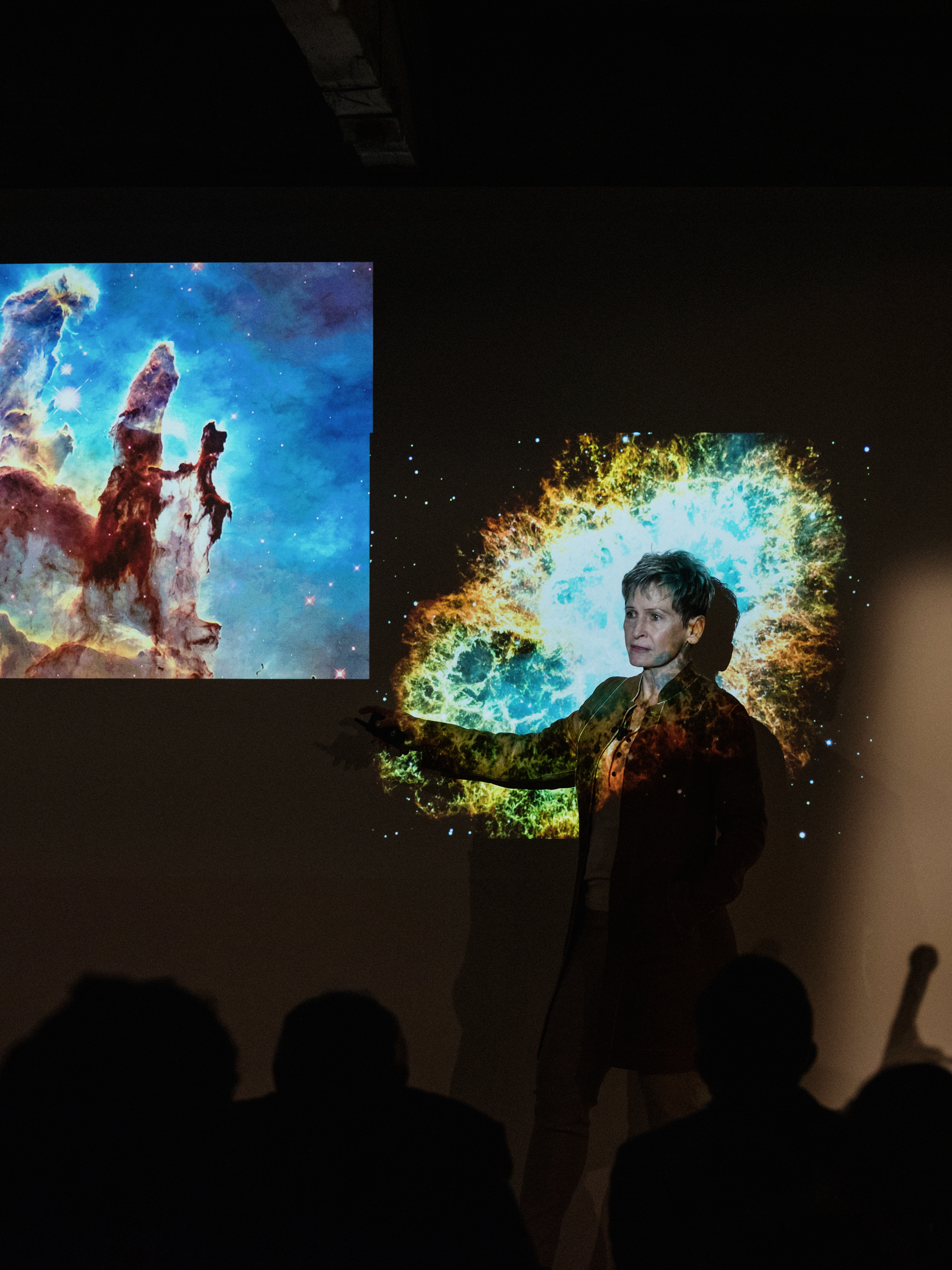
To close out New York Fashion Week late last week, Hermès threw a glorious party at its soon-to-be new home at 706 Madison Avenue, a striking four-floor building that—though still technically under construction—was transformed for the evening into a dreamland to celebrate the whimsical spirit of the French house.
Known for its elegant and artistic creations, Hermès tasked six artists with conceiving special projects around six of its most popular objects in an effort to showcase the craft and history behind each of them.
The final artworks ranged far and wide. Upon entering the space, visitors were shown upstairs to the first floor, where they stepped right onto the stage of Playtronica, a self-described “musical artist community,” whose members make music from the electronic frequencies of found objects, essentially turning seemingly random things into instruments.
A look into the artists’ labs. Photo courtesy Hermès.
The various objects Playtronica tricked out for the evening transmitted a rich chorus of sounds, ping-ponging between a wooden Kelly bag (the iconic carryall named for American actress and Monégasque princess Grace Kelly), riding stirrups, and—quite strangely—a pineapple.
Amidst the Playtronica installation, another equally confounding performance took place, choreographed by artist Madeline Hollander, who participated in last year’s Whitney Biennial.
A sound work by Playtronica incorporates designs by Hermès. Courtesy Hermès.
Every 24 minutes, a troupe of dancers donning Hermès’s new and brightly hued double-sided scarf, collectively cried out “Heureka!” while twirling about the space, pointing to objects placed on various surfaces and screens reflecting rolling footage of the party.
The play on “Eureka!” was, according to the fashion house, meant to call attention to its continued dedication to pursuing creative innovation and new ideas—the evening’s unconventional performances not excepted.
“Our tradition is to constantly create!” exclaimed Pierre-Alexis Dumas, Hermès’s artistic director, in a statement about the event.
Violetta Komyshan on an Hermès swingset. Courtesy Hermès.
Upstairs, guests were waited on and escorted around by servers dressed as horse-drawn-carriage drivers, reflecting Hermes’s emblem, which was conceived in the early 1950s.
Featuring a Duc carriage attached to a horse, the imagery hearkens back to the house’s humble beginnings as a horse saddlery manufacturer.
At the event, artist Jean-Simon Roch created a “mechanics lab” focusing on Hermes’s bag closures, clasps, and hardware—a fitting ode to house founder Émile-Maurice Hermès, who was the first designer to use zippers on leather goods and luggage after meeting with Henry Ford in America and discovering the sliding system fastened to the cloth top of a car in 1916.
(That innovation would go on to make history in helping to establish Hermès as an inventive fashion authority.)
A view of the “mechanics” lab. Courtesy Hermès.
Additionally, the design firm Lab 212 crafted swing-sets out of Hermès’s saddles—on which guests did, in fact, swing, while sipping their cocktails and noshing on bite-sized passed appetizers.
Meanwhile, on the top floor, award-winning filmmakers Michele Anne de Mey and Jaco Van Dormael shot (and screened) a movie in real time.
Michele Anne de Mey and Jaco Van Dormael at work. Courtesy Hermès.
Overall, the celebration of the house’s inspirations and core values were brought to life significantly by the artworks, which proved to be fittingly immersive, even if miniature, worlds in which to showcase Hermès’s new objects.
After several rounds of drinks, the guests—including Naomi Campbell, Martha Stewart, Indre Rockefeller, Zosia Mamet, Daniel Boulud, Tyler Mitchell, and Sophie Elgort—made their way back downstairs for a little dessert and dancing before heading out into the night.